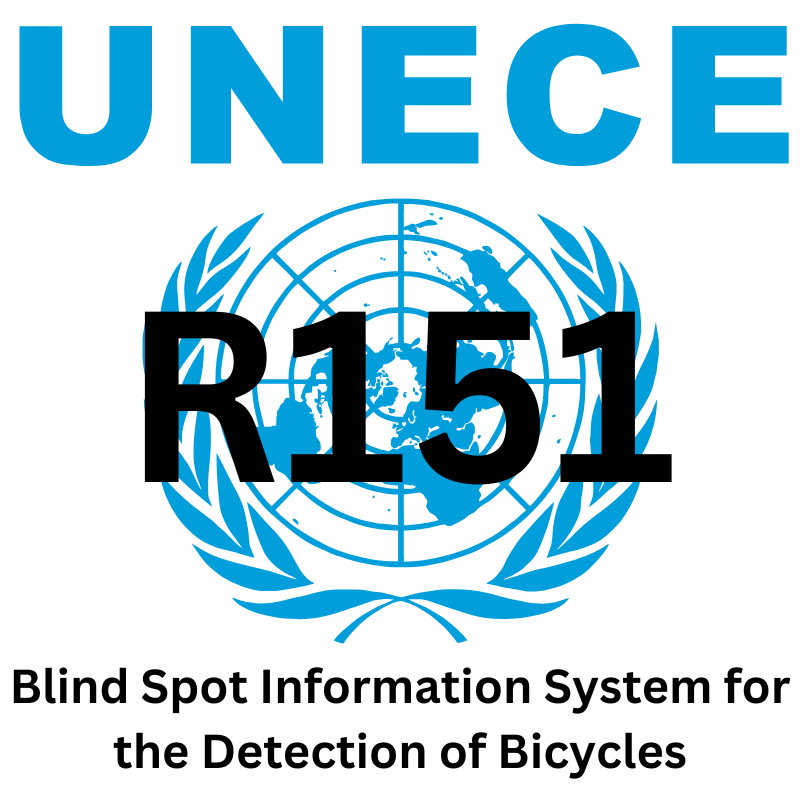Guide To: UNECE R151 - Blind Spot Information System for the Detection of Bicycles
08 January 2024

Guide To: UNECE R151 - Blind Spot Information System for the Detection of Bicycles
UN ECE Regulation No. 151 provides uniform provisions for the approval of Blind Spot Information Systems (BSIS) for motor vehicles. These systems are designed to detect bicycles and other vulnerable road users (VRUs) in the vehicle’s blind spots, particularly in the vicinity of the front and near side, to reduce the risk of collisions. This regulation applies to vehicles in categories N2 (medium-duty trucks), N3 (heavy-duty trucks), and optionally, vehicles in categories M2 (buses) and M3 (large buses).
Scope of the Regulation
UN ECE R151 applies to:
- Blind Spot Information Systems (BSIS) for vehicles in categories N2, N3, and optionally for M2 and M3.
- The regulation focuses on systems that detect bicycles moving alongside vehicles, particularly when they are turning.
Key Features of UN ECE R151
Blind Spot Information System (BSIS):
- The BSIS is a driver assistance system that provides optical, acoustic, or haptic signals to inform drivers about potential collisions with bicycles. The system detects bicycles in the vehicle’s blind spots, particularly when turning right (in countries with right-hand traffic).
Detection and Signalling:
- The BSIS is required to detect bicycles moving at speeds between 5 km/h and 20 km/h within a lateral distance of 0.9 to 4.25 meters from the vehicle, which could result in a collision.
- An optical information signal must alert the driver when a bicycle enters this critical zone. The signal is designed to be non-intrusive but visible, ensuring the driver is aware of potential danger without being distracted.
Performance and Testing Requirements:
- The system must activate the information signal when a bicycle approaches within 6 meters of the front right corner of the vehicle. The signal should be given at a “last point of information (LPI),” providing enough time for the driver to react.
- The test procedure involves dynamic and static tests to verify the system’s performance under various traffic scenarios. These tests ensure that the system provides accurate information without triggering false positives.
Environmental and Durability Standards:
- The BSIS must remain functional in various environmental conditions, including low visibility and sensor contamination (e.g., from snow or mud). The system should also comply with UN Regulation No. 10, which deals with electromagnetic compatibility.
False Positive Reduction:
- The regulation specifies that the BSIS should minimize false positives, such as detecting static objects like traffic signs or parked cars, unless a collision is imminent.
Conclusion
UN ECE R151 establishes crucial safety requirements for Blind Spot Information Systems that detect bicycles, particularly for large vehicles like trucks and buses. By informing drivers of potential collisions with bicycles, this regulation helps reduce accidents and improve the safety of vulnerable road users. Compliance with this regulation is essential for manufacturers looking to equip their vehicles with BSIS systems.